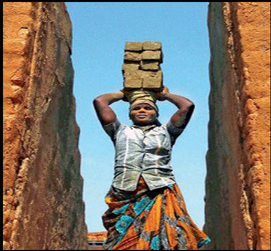In February 2015, Rahul Nath, then sub-collector of Tiruvallur, received an anonymous call, the voice on the other end pleading for help. Nine hours later, Nath tracked the person to a brick kiln. More than 300 bonded labourers from Odisha were rescued that day. For those working at the district collectorates in Kancheepuram and Tiruvallur, such calls are familiar. Follow-ups are, however, rare.
In a step towards addressing this problem, the state government will soon set up a multi-lingual toll-free helpline for labourers, specially bonded labourers. The initiative is among the Tamil Nadu’s labour department’s reforms as part of its state action plan to tackle bonded labour The plan, which includes the appointment of a state-level officer and a committee to oversee implementation of various laws, was released in September. Officials are now undertaking a survey on the extent of this “neo-slavery” in the state and maintaining a database. This is the first time since 1995 that the government is backing such an enumeration.
Mangat Ram Sharma, principal secretary to the government, Labour and Employment Department, said the plan was drafted following the Centre’s revamp of various schemes for bonded labourers, including increasing the rehabilitation amount of rescued bonded labourers to `1 lakh for male beneficiaries and `2 lakh for women and children. This is in addition to `20,000 for immediate assistance at the time of rescue. “We needed a concrete plan to ensure the money is not misused. Also, people who get this sum should not return to bondage,” he said. In March, following a Madras high court directive, the additional secretary of the labour and employment department was appointed as the state-lev r officer for bonded labour, in addition to heading the child labour cell.
As the rescue, relief and rehabilitation of these labourers involve multiple departments, the new state action plan involves setting up a 13-member state-level monitoring committee comprising senior officials from various departments and setting up a district-level vigilance committee chaired by the district magistrate.
Article Source: The Times of India

